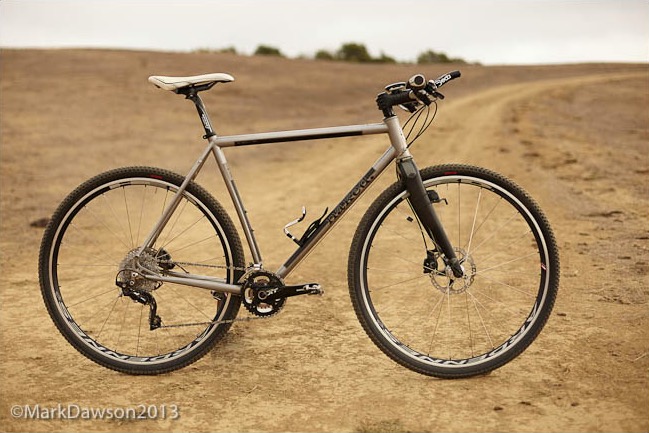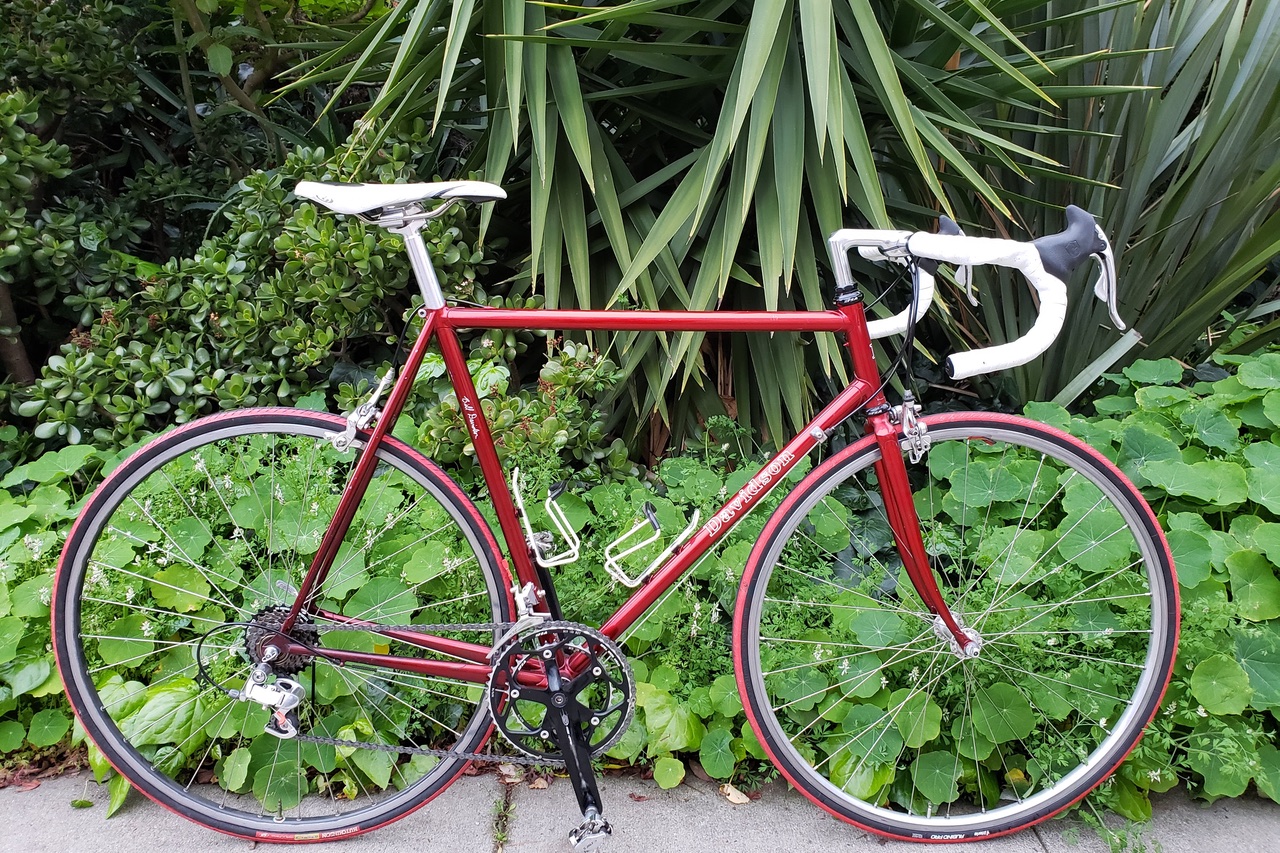Matt Shields' 1986 Alpine - Lazarus Lives!
In our new series called The Ride, we explore the relationships between cyclists and their handbuilt custom bikes, and how those partnerships enhance their cycling experiences and broaden their horizons.

Matt Shields got his first custom bike, a 1986 Alpine, after he and his Schwinn Peloton returned battered and bruised from a racing adventure in Belgium. Like most cyclists, he wanted a custom bike that would not only fit like a glove, but also serve the demands of the types of cycling he engaged in and reflect his style and aesthetic tastes.
Little did he know how far this new custom bike would take him in pursuing his cycling interests and expanding his horizons.
“When I returned from racing in Belgium in the summer of '86, my father noticed most of the elite riders at the local races in the Washington DC area were riding custom Alpines. He must have felt pity for me on my race-battered Schwinn Peloton, so he started chatting with folks at the races, who pointed him to Fred Kelley at Alpine Cycles,” said Shields.
Fred Kelley and Alpine Cycles were a Washington, D.C. institution for much of the 1980s. A racer himself, and a former Maryland State Time Trial Champion, Kelley was a self-starter who shadowed Tom Kellogg for a while before setting up his own frame building and paint shop. He quickly gained a following amongst the many local D.C. area cyclists, and he remarked in a 1987 interview in The Washington Post that he was one of the few frame builders he knew of that “owns his own home and drives a new car.”
In Shields’ case, he and his dad took the bait and set up an appointment with Kelley for a fitting.
“I still remember the shop visit in great detail. The biggest thrill for me was picking the paint. Fades were all the rage in 1986, and I went to Alpine with an electric lime green and white fade in mind based on a Diamant frame I'd seen in Belgium, but I wasn't happy with any of the greens in Fred's Imron color book. But there was this plum purple frameset hanging on the wall of his office that I couldn't take my eyes off, so I went with that instead. It was delivered in mid-December 1986.”

Matt Shields and his Alpine in 1986 (left) and 2013 (right). All Photos: Matt Shields
The frame’s geometry was designed with the rider’s dimensions in mind, but is relatively standard for a mid-1980s bike with 73 degree seat and head tube angles, and a shorter 57 cm top tube to go with the 63 cm seat tube. Greg LeMond’s influence with longer top tubes and more relaxed seat tube angles was a still a couple of years away from filtering into the design philosophies of American frame builders, but there was another reason for the shorter top tube on Shields’ Alpine.
“I was 17 years old and about 6'1" at the time. I only weighed about 160 lbs and I had this crazy, disproportionate 36" inseam - I was all legs. My torso continued to grow another 2 inches so I went from a 100mm to a 130mm stem before I was 19,” said Shields.
Kelley clearly understood that the young man wasn’t through growing yet, and that’s reflected in his choice of tubing: Columbus SPX, which was beefier and stronger tubing than the standard SLX tubes, and more suited to the kind of torque that a tall rider places on a frame, regardless of his weight. He used Cinelli lugs to complete the build. For a 17-year old bike-crazy teen, it was the stuff dreams are made of.
“It's a pretty standard road bike for the era. But it's got a lot of extras that set it apart: Paint to match the Silca Impero frame pump, a bunch of pantographing, chrome fork and chainstay, and my name painted on the chain stay. These touches were luxury items to a 17 year old kid. If I had to guess, my father was upsold a bit. But to me the Cinelli MCA fork crown is my favorite detail. It's just beautiful.”
Shields’ purple patch of glory on his plum Alpine was sadly short-lived in the rough-and-tumble of the amateur racing circuit. A crash in June of ‘87 during the National Capital Open, a now-defunct criterium on the 1-kilometer long Ellipse just south of the White House, left his frame with a slightly-buckled downtube. Despite emergency treatment by Kelley to rehabilitate it, according to Shields that frame never quite rode the same.
So Shields moved on to other bikes. He held onto the Alpine though, if only for the nostalgia that your first custom frame retains. Largely decommissioned, it was ridden infrequently over the next 25 years.
Then, in 2013 and with a burgeoning interest in riding gravel roads, a light went off in Shields’ head and he dusted off the old frame and fork, realizing that it would fit the 23mm rims and 28mm tire combination that he often used for gravel road riding. Back in 1986, these wide clearances weren’t so much for fitting thicker tires, rather they enabled a rider to get back home in the event of a broken spoke that would knock the rear wheel wildly out of true, a more common occurrence back then. Now, the frameset found new purpose as a gravel road-ready platform for adventure.

The patient on the operating (alignment) table at J.D. Buchanan Cycles
But the after-effects of that 1987 crash still lingered, so Shields sent the frame off to J.D. Buchanan Cycles for a complete realignment, and also had them cold-set and re-space the rear dropouts so that they would accept modern hubs. The componentry was also brought into the modern era.
“Originally I had an early Campagnolo C Record groupset on the bike, except for Shimano Dura Ace brakes, which was considered the ideal set up at the time. Save for the original San Marco Rolls saddle, dropout spacers, and Campagnolo headset that it came with, everything got upgraded. The groupset is Campagnolo Record and Chorus 10 speed components,” said Shields.
So the Alpine found new purpose again, and now plies the gravel roads in the western Virginia suburbs of Washington D.C. thirty years later. It has long outlasted Kelley’s tenure at Alpine Cycles, which came to an end in the late 1980s after Kelley grew tired of the business, however robust demand remained.
For Shields, holding on to that compromised frameset proved to be a prescient move, as his later interests in retro bikes and gravel road riding both found new purposes for this thirty-year survivor.



